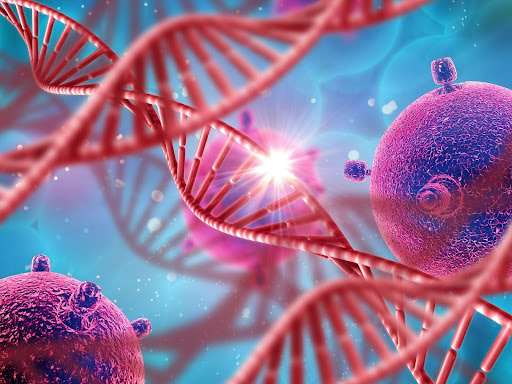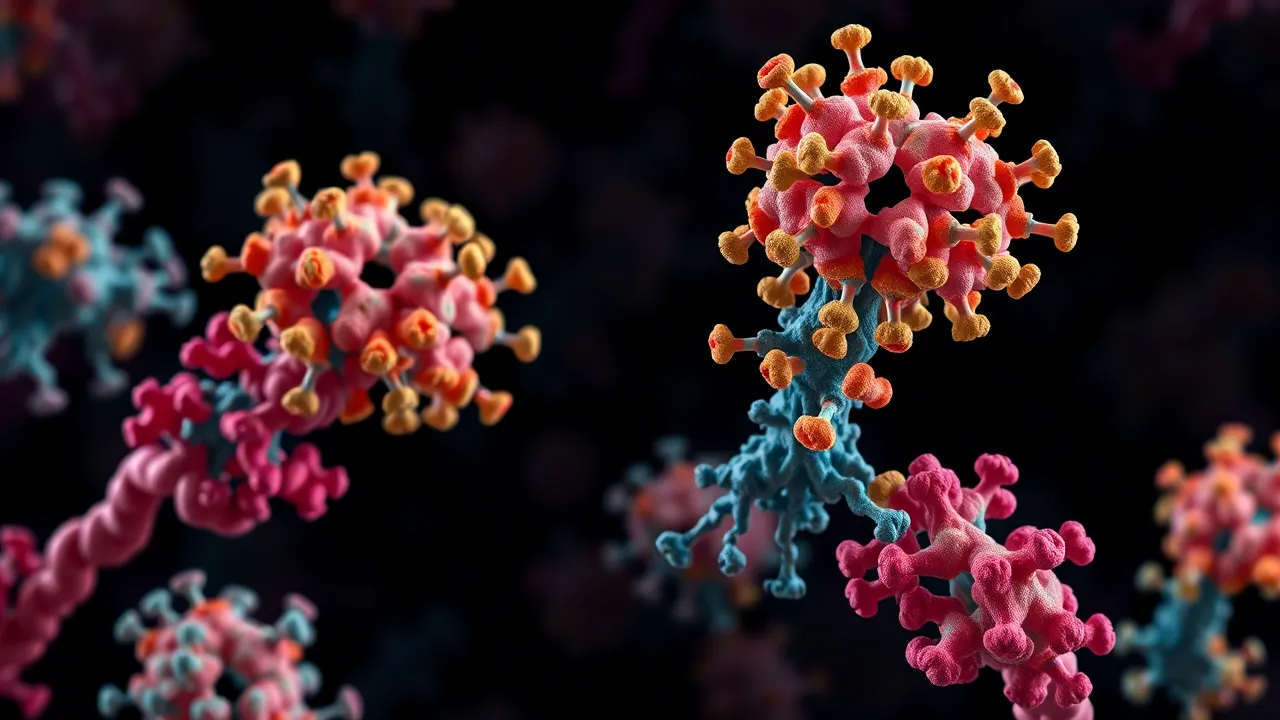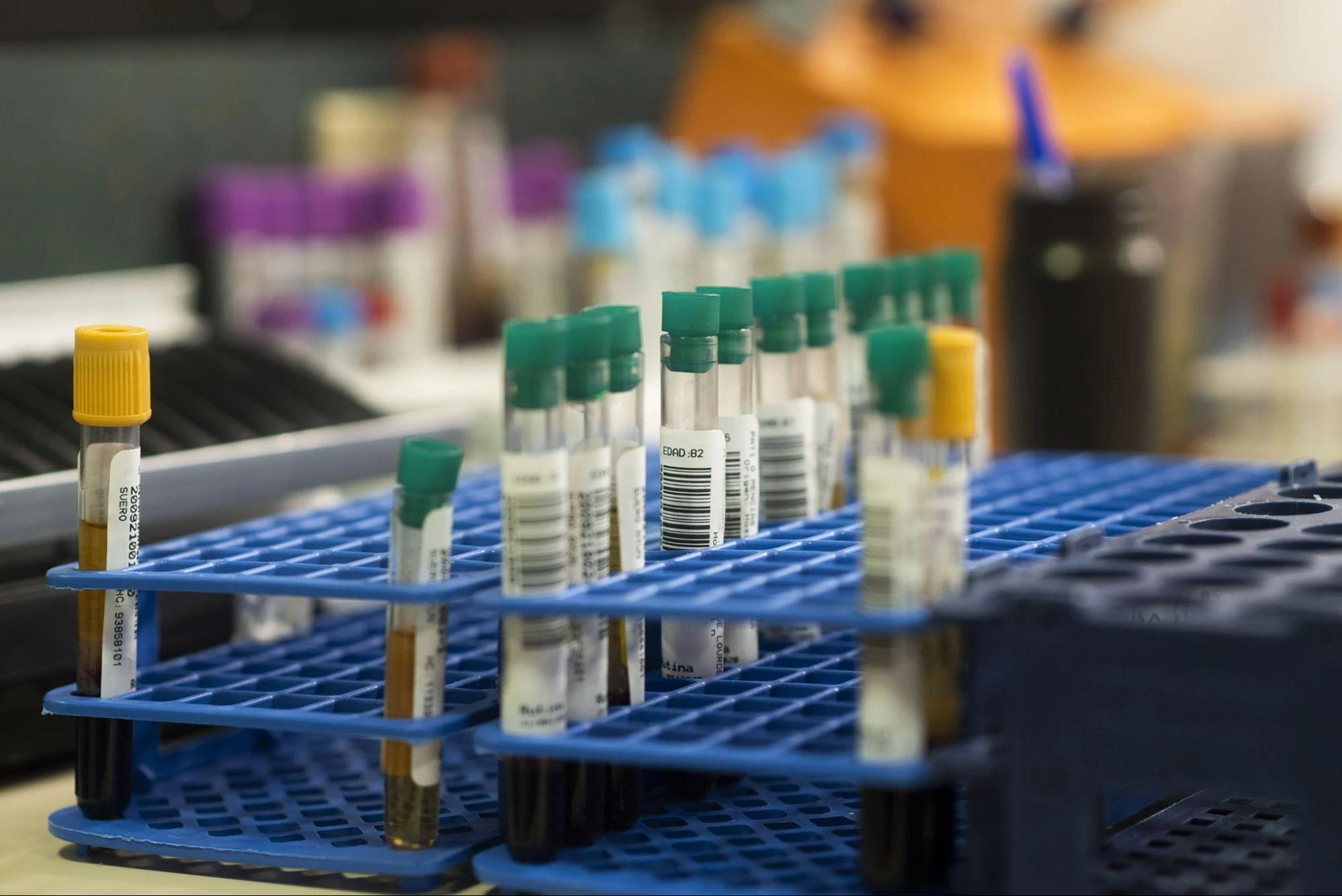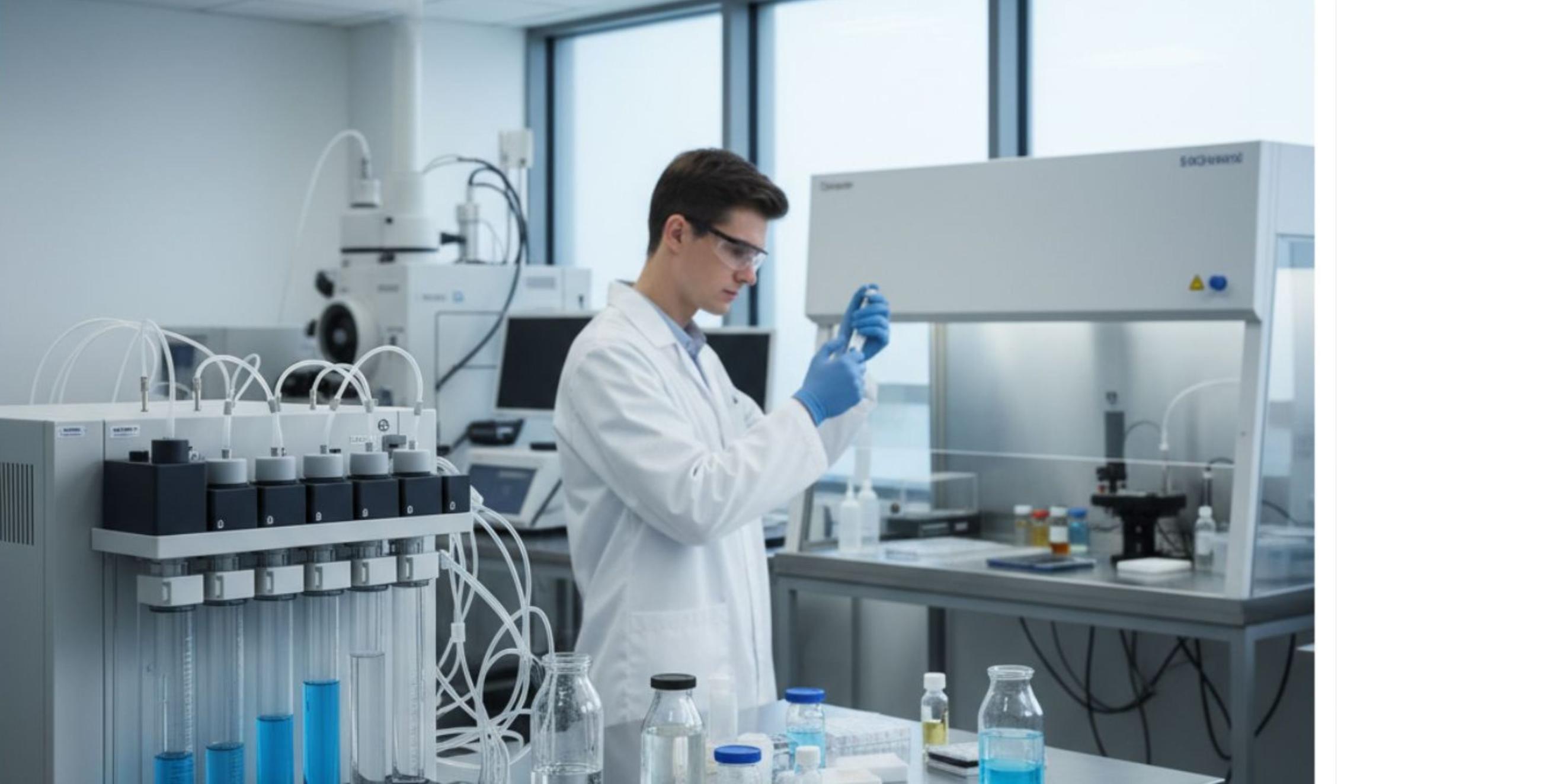Recombinant Proteins Applications: Cytokines, Growth Factors & More
In this Article
All of the products listed in AAA Biotech’s catalog are strictly for research-use only (RUO).

Recombinant proteins are a classification of proteins made inside lab-controlled
living cells, but using DNA that comes from outside the cell instead of its own
natural DNA.
Scientists insert a specific piece of DNA—usually referred to as the “gene of interest (GOI)”—into the cell using a tool called an expression vector. The cell then recognizes this inserted DNA as “useable”, and subsequently uses this new DNA to make many copies of the protein that is coded for on the inserted “gene of interest”.
Today, producing recombinant proteins in the lab is one of the most invaluable techniques available to scientists working in these related fields.
Recombinant proteins are widely used in medicine, research, and biotechnology because they are -
- pure
- specific
- efficient
- safe
- easy to customize
- can be made in large quantities
- give consistent results
What Are Some Examples of Commonly Recombinant-made Forms Of
Proteins?
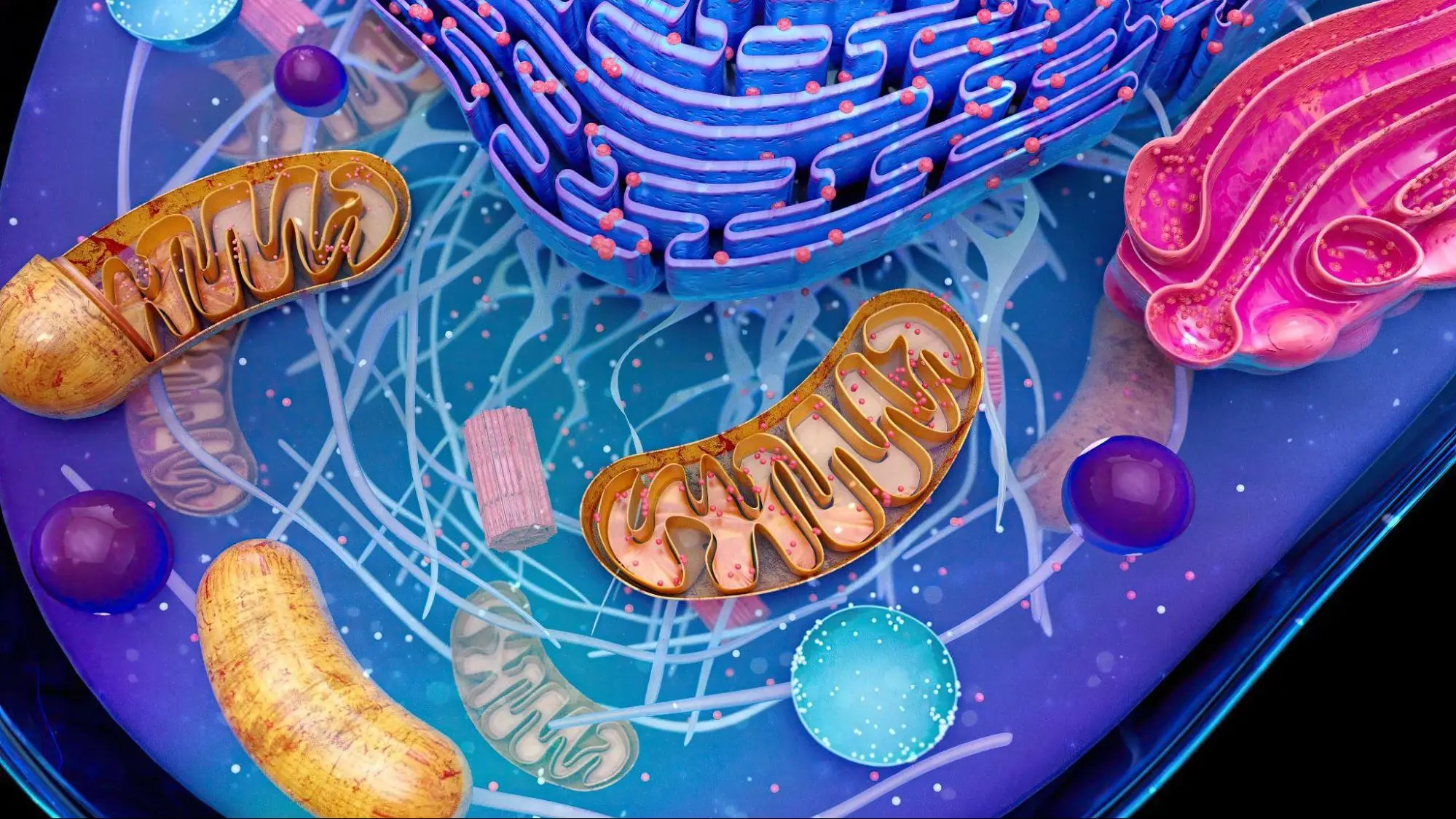
Cytokines
These are small proteins that help regulate the immune system, inflammation, and cell-to-cell communication. Examples include:
- Interleukins (ILs)
- Interferons (IFNs)
- Tumor necrosis factors (TNFs)
Chemokines
A special group of cytokines that guide cells to move where they are needed, especially during immune responses or inflammation. Examples include:
- CCL proteins
- CXCL proteins
Growth Factors
These proteins help cells grow, divide, and survive. Common ones include:
- Epidermal growth factor (EGF)
- Fibroblast growth factor (FGF)
- Vascular endothelial growth factor (VEGF)
Neurotrophins
These are growth factors that support brain and nerve cells. They help with nerve development and function. Examples include:
- Nerve growth factor (NGF)
- Brain-derived neurotrophic factor (BDNF)
Proteases & Other Enzymes
These proteins help break down other proteins or speed up chemical reactions in the body. Examples:
- Matrix metalloproteinases (MMPs) - help shape the extracellular space (outside cells)
- Caspases – involved in controlling cell death
Ligands & Receptors
These are molecules that fit together like a lock and key to send signals inside cells. Recombinant forms of these types of proteins aid scientists in understanding how cells communicate and how drugs work. Examples include:
- Wnt and Notch ligands
- TNF receptors and cytokine receptors
Applications in Research
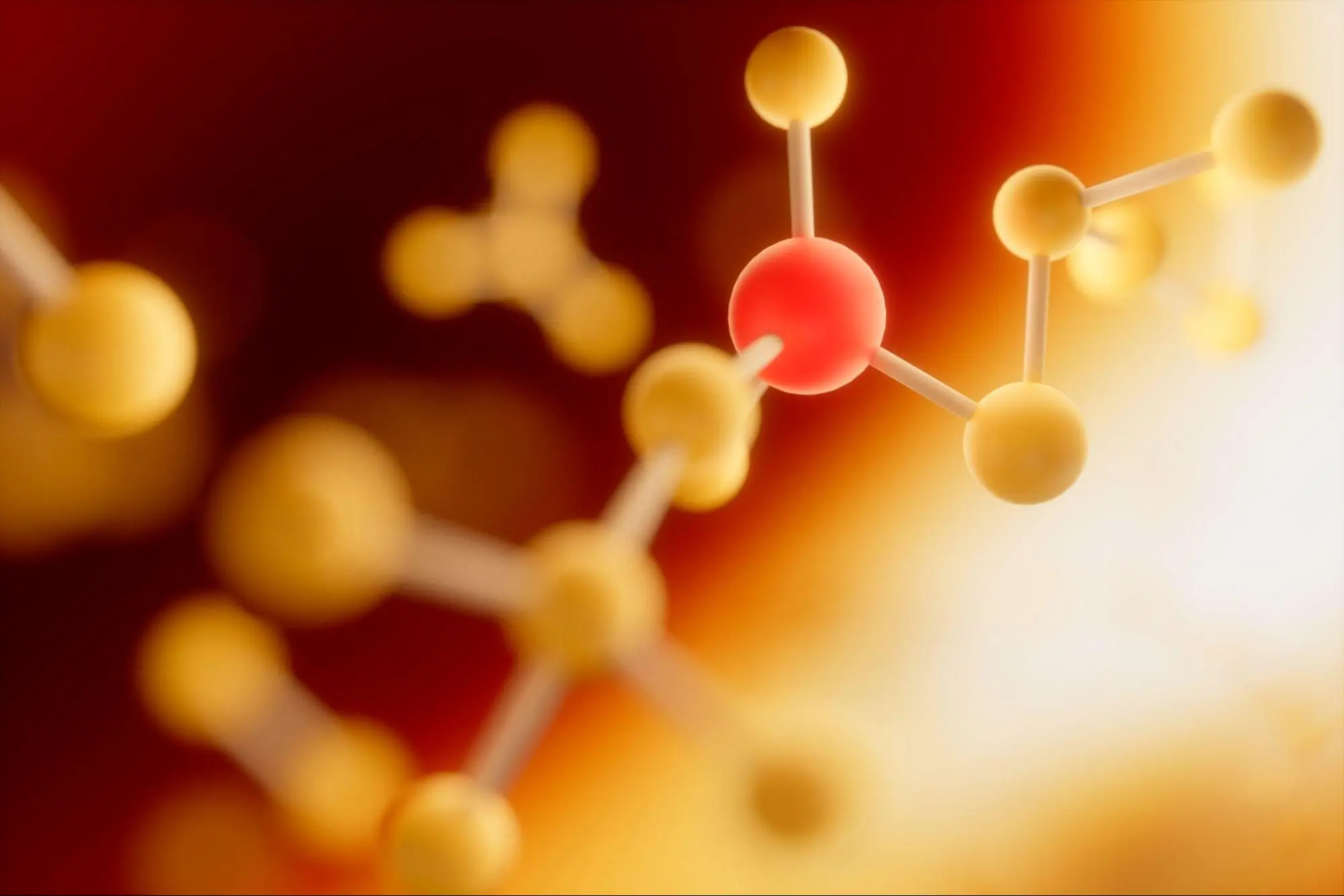
Recombinant proteins are powerful tools that enable researchers to further
understand how the body works, and they have become integral in supporting new
discoveries and biotechnical advancements in many different areas of study.
3D Cell and Organoid Models
Scientists primarily use recombinant proteins to help grow mini-organs (referred to as “organoids”) in a controlled laboratory setting.
These tiny 3D models of organs are helpful in elucidating the characteristics of new drug being developed, and in studying diseases in a more realistic way. Some examples of commonly-used lab organoids include -
- Brain models
- Liver models
- Gut models
Cancer Research
Researchers also use recombinant proteins extensively in studying aspects of cancer such as-
- How tumors grow
- How the immune system interacts with the tumor/cancer
With adjustments or modifications made to the recombinant protein tools, researchers can advance science’s understanding of how cancer behaves and correspondingly open up new treatment avenues for further investigation.
Heart and Blood Vessel Research
Recombinant growth factors help scientists in understanding how blood vessels form and how heart tissue heals after damage.
This kind of research is essential for developing better treatments for heart
disease.
Environmental and Agricultural Studies
Recombinant enzymes are widely-used tools in the study of how plants grow and
how waste can be broken down “naturally”. It supports the development of better
farming methods and multitudinous other eco-friendly endeavors.
Brain and Nerve Research
Recombinant forms of proteins such as neurotrophins are often used by scientists to study how brain cells survive and communicate.
These sorts of recombinants are especially important for researchers investigating various brain diseases such as -
- Alzheimer’s
- Parkinson’s
Stem Cell and Regenerative Medicine
Recombinant proteins are incredibly potent tools harnessed by scientists for guiding stem cells to grow (differentiate) into various specific types of cells, such as-
- Muscle cells
- Nerve cells.
They are also crucial for generating -
- new tissues
- charting a course in treatment development
Another intrinsic property that they posess, is that they are responsible for repairing or replacing damaged areas of the body.
What Are Some Findings of Recent Related Research?

1. Growing Stem Cells in Outer Space
In 2017, scientists sent stem cells into space – where they observed something amazing.
They found that some of the populations of stem cells were growing faster in zero gravity compared to how they do on Earth. While there are admittedly quite a few logistical hurdles to be overcome to make it a viable reality, the observations and data from these experiments have opened up new possibilities for creating novel stem cell therapies in space.
Additionally, growing cells in space isn’t a simple task. Why? Primarily due to the lack of gravity to keep liquids stably in place.
In these space experiments, they utilized recombinant lab-made proteins in the cell “food” as supplements. These recombinant protein supplements were extremely beneficial for the stem cells, in that they helped them to:
- grow “better”
- remain healthy
With these sorts of recombinant supplements, the cells were observed to grow/thrive well in both -
- flat (2D)
- 3D cultures
In the future, as space-based scientific study becomes less expensive and less complicated logistically, it would make it vastly more attainable for other researchers to further study and advance scientific understanding of how cells behave in space.
These sorts of findings could very well help with future projects even beyond Earth in areas such as -
- tissue engineering
- disease research
- customized medicine
2. Animals and People Like Real Sugar
People and animals don’t like fake sweeteners. But why exactly is this?
A study in 2022 uncovered evidence that the primary culprit is in the gut. Specifically, a certain population of cells in the gut that are known as “neuropods”.
These interesting cells are able to differentiate between whether it is encountering “real sugar” or an “artificial sweetener”.
These observations were discovered in experiments with mice, from scientists tracking and intensely monitoring the sugar entering the animal’s small intestine.
These neuropods appear to be sending signals directly via the vagus nerve, to the brain via a chemical messenger known as glutamate.
This chemical messenger activates the brain's “reward system”, resulting in “real sugar” being experienced by the animal as being more satisfying. Artificial sweeteners were observed to produce a different signal that doesn’t produce the same “reward” feeling.
Further, it shows that our gut actually does play a big role in our food choices, and that it is not just our taste buds dictating our diets.
When you figure out how these gut-brain signaling pathways work, it helps lead scientists to develop ways to reduce sugar cravings, which can subsequently be developed into treatments for related health issues.
3. Scientists are using 3D models of bat lungs to better understand viruses and how they spread to humans
Bats, unfortunately, are notoriously efficient vectors for carrying and spreading many dangerous viruses. Some well-known ones are:
- SARS-CoV-2
- Ebola
- Nipah
Again, unfortunately, it is not a simple task to study how these viruses actually work inside bats. One of the main reasons for this is that most lab models are only capable of using simple flat (2D) cell layers for their research models. These may be adequate for many applications, but they do not accurately show how actual, native, bat organs function/interact with virus.
In recent years, scientists in Egypt and Japan have pioneered new advanced 3D models of bat lungs.
These models, referred to as "organoids," are small, lab-grown, versions of real organs. They mimic the structure and behavior of real bat lung tissue much more closely than older models used in the past.
By growing bat lung cells in these 3D shapes, researchers are not empowered to further study -
- How bat lungs likely actually respond to viruses
- The strength of the organs’ innate defenses
These new tools are seeing an expanded use in emerging fields, where they aid scientists in better understand -
- How viruses grow
- How dangerous viruses are
- How to fight the virus
Why tell you about “organoids”? These organoids are only possible because of recombinant protein technology. In order to create these organoids, special (often recombinant) growth signals are applied to help the bat cells develop and survive in the lab.
4. Scientists around the world are turning skin cells into “artificial” sperm and egg cells in order to help save animals that are nearing extinction.
Over the past ten years, various research teams have made advancements in this technology by developing processes for changing “normal” skin cells into very special stem cells referred to as induced pluripotent stem cells (iPSCs).
These stem cells are capable of becoming any type of cell in the body - including sperm and egg cells! This is how these teams around the world are able to fight the extinction of these vulnerable animal species – through in vitro fertilization.
In China, scientists were able to turn panda skin cells into iPSCs and produced data showing that they actually work quite well. These sorts of research are important steps for helping keep pandas genetically diverse and to support breeding programs into the future.
In Europe, another team created similar stem cells from a northern white rhino named Nabire, who died in 2015.
They used a method known as “electroporation” to change the rhino’s skin cells. These newly produced stem cells could act like the very early cells that make up a developing embryo, and can turn into any cell type in the body— even sperm or egg cells — offering hope for bringing back this nearly extinct species.
5. Scientists have developed a 3D model of human skin that can grow fat, nerves, and even hair.
In 2020, researchers made a complex skin material entirely from special stem cells that were capable of turn into any type of cell. This new model is has been shown to be extremely useful in many medical research fields, particularly in developing treatments for healing wounds, treating hair loss, and improving skin grafts.
The researchers essentially mimicked how skin naturally forms in an embryo by growing the cells in a similar way in 3D in a lab. They managed to create entire layers of skin, and were surprised to see that the skin contained actual working hair follicles.
To accomplish this, they had to carefully control a wide array of signals both external and within the cells by using special nutrients and proteins. By giving the right signals at the right time — like Wnt and BMP — they guided the stem cells to differentiate into skin and hair just like as observed in early development naturally.
Finally…
Lab-made proteins (known as recombinant proteins) have already benefitted science in literally countless ways, and are responsible for allowing researchers to make enormous progress in virtually every front in biological science knowledge, but there’s still a lot more they can do.
Newer/developing biotech tools are making it easier for creating very specific proteins that can control the micro-environments immediately surrounding the growing cells.
This empowers scientists in their research goals by allowing them to grow and develop very specialized types of cells — like brain, blood, heart, and immune cells — more accurately and effectively.
Faq's
What are recombinant proteins used for?
Recombinant proteins are made in the lab and help scientists study how proteins interact with each other.
They are widely used in research areas such as molecular biology, cell biology, and biochemistry. These proteins are also important in lab tests such as ELISA, Western Blot, and ImmunoHisto Chemistry.
Okay, but what are “proteins” used for?
“Protein” is an umbrella term which simply means “long chain of amino acids linked to one-another.” Generally, there are considered to be three categories of “proteins” types, and each category is defined by how the protein is actually created. These categories are:
1. Native/Natural proteins
2. These are proteins that are produced normally by an animal/cell, without any sort of modification from an external source.
3. Recombinant proteins
4. These are proteins that are produced in controlled laboratory settings, almost always through use of a cellular “expression host” (such as E. coli, Yeast, Baculovirus, and Mammalian cell lines).
5. Synthetic proteins
These are proteins that are also produced in controlled laboratory settings, but what differentiates them from “recombinant” proteins, is that “synthetic” proteins are “built” using purified chemicals. Each amino acid of the protein is added to the growing chain of amino acids one-by-one. No living organisms are needed or used to create synthetic proteins.
6. Proteins, especially plant-based ones, are used extensively as supplements in many food and drink products.
Why is protein analysis important?
Studying proteins in the blood can help medical professionals identify diseases such as multiple myeloma (a type of cancer). If unusual protein patterns are found, it can lead to more tests being performed in order to confirm a diagnosis, and subsequent treatment plan.


